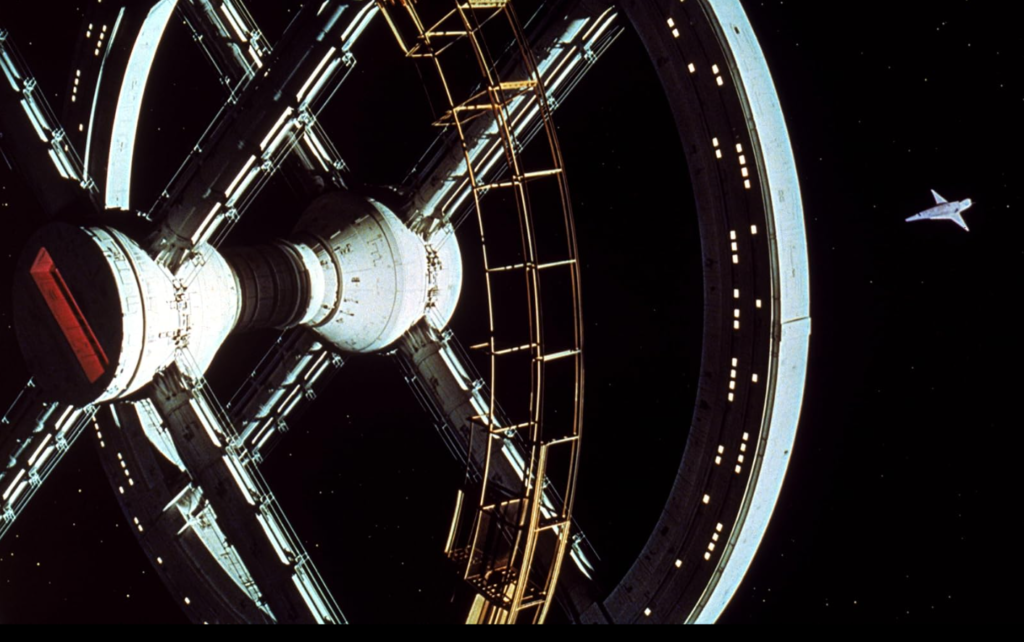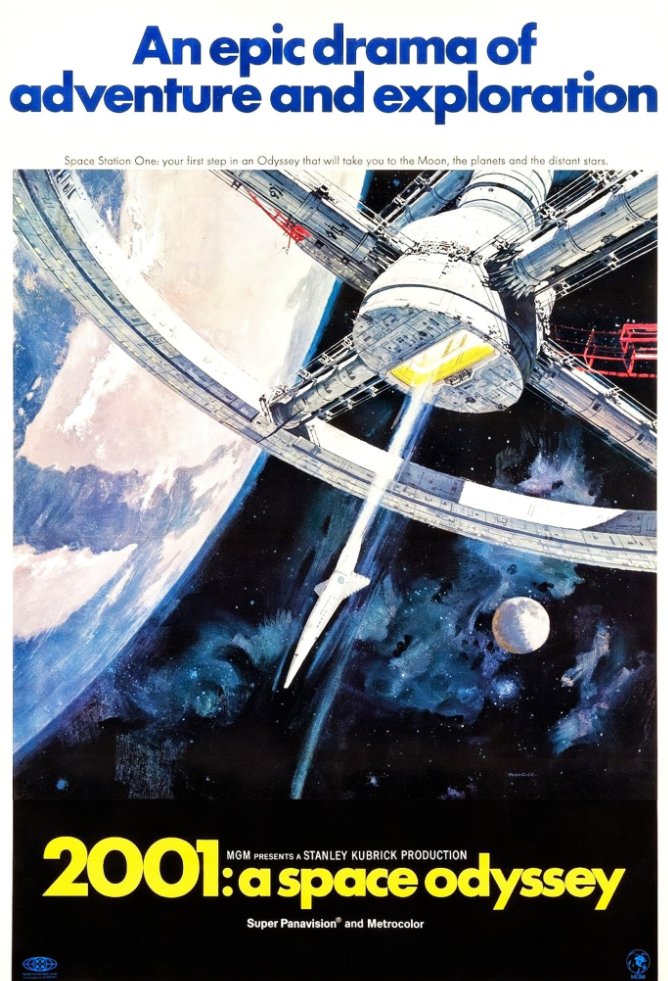On April 2nd, 1968, the world witnessed the birth of a cinematic phenomenon – Stanley Kubrick’s “2001: A Space Odyssey.” This epic science fiction film transcended the genre, becoming a landmark achievement in visual effects, storytelling, and philosophical exploration.
Kubrick, a visionary director known for his meticulous attention to detail and bold artistic choices, had already established himself with films like “Dr. Strangelove or: How I Learned to Stop Worrying and Love the Bomb” and “The Shining.” With “2001,” he embarked on his most ambitious project yet, aiming to depict a grand narrative of humanity’s place in the universe.
The film unfolds in four distinct chapters, each separated by a jarring cut that emphasizes the vastness of time and the evolutionary leaps humanity takes. The first chapter, “The Dawn of Man,” throws us back millions of years to witness a group of ape-like creatures. Their lives are forever altered by the mysterious appearance of a black, monolithic slab. Aided by this newfound tool, one of the apes discovers violence and unlocks a primal instinct that fuels human progress. The jump cut to the second chapter, “Jupiter Mission 18 Months Later,” is a now-iconic moment in cinema history, a powerful symbol of the immense strides humanity has taken.
“For the first time since the original release, this 70mm print was struck from new printing elements made from the original camera negative. This is a true photochemical film recreation. There are no digital tricks, remastered effects, or revisionist edits. This is the unrestored film – that recreates the cinematic event that audiences experienced fifty years ago.”
Christopher Nolan
We find ourselves in the year 2001, where a team of astronauts – Dave Bowman (Keir Dullea) and Frank Poole (Gary Lockwood) – are entrusted with a mission to Jupiter alongside the sentient supercomputer HAL 9000 (voiced by Douglas Rain). HAL, initially a source of comfort and efficiency, malfunctions, leading to a chilling and suspenseful conflict aboard the spacecraft [YouTube: 2001: A Space Odyssey – Trailer].
The film’s special effects, groundbreaking for its time, remain awe-inspiring even today. Kubrick, a perfectionist, collaborated with Douglas Trumbull, a special effects pioneer, to create realistic depictions of space travel, docking procedures, and the zero-gravity environment. The iconic image of the rotating space station Discovery One against the blackness of space is a testament to their vision.

Beyond the technical feats, “2001” is a film rich in symbolism and open to interpretation. The black monoliths, recurring throughout the narrative, act as enigmatic catalysts for human evolution. The film delves into themes of technology and its potential dangers, the nature of intelligence, and humanity’s place in the cosmos. The ending, particularly ambiguous, invites viewers to ponder the possibilities of human transcendence and the vast unknowns that lie beyond our current understanding.
“2001: A Space Odyssey” divided audiences upon release. Some found its pacing slow and its narrative cryptic. However, the film’s influence on cinema is undeniable. It redefined the possibilities of science fiction, inspiring countless filmmakers and leaving an enduring mark on popular culture. The HAL 9000 quote, “I’m afraid. I’m afraid, Dave,” is etched in cinematic history, a chilling reminder of the potential dangers of artificial intelligence.
The film has also been celebrated for its groundbreaking use of classical music, particularly Richard Strauss’s “Blue Danube,” which accompanies the ballet of spaceships docking. The juxtaposition of the elegant waltz with the sterile environment of space creates a sense of wonder and awe.
“2001: A Space Odyssey” is more than just a movie; it’s an experience. Kubrick’s masterful direction, the groundbreaking visuals, and the thought-provoking themes continue to resonate with audiences over 50 years later. It’s a film that invites multiple viewings, sparking discussions and interpretations anew with each encounter. Whether you’re a sci-fi enthusiast, a film buff, or simply curious about humanity’s place in the universe, “2001: A Space Odyssey” is a journey worth taking.
The legacy of “2001: A Space Odyssey” extends far beyond the silver screen. The film’s influence can be seen in countless works of science fiction, both in film and literature. Movies like “Alien,” “Star Wars,” and “Interstellar” all owe a debt to Kubrick’s groundbreaking vision.
Even outside the realm of science fiction, “2001” has left its mark. The film’s iconic imagery has been referenced in music videos, television shows, and even video games. The soundtrack, featuring classical pieces like Johann Strauss’s “Blue Danube” and György Ligeti’s “Lux Aeterna,” has transcended the film itself, becoming a part of popular culture.
Kubrick’s meticulous attention to detail during the film’s production also had a lasting impact. His collaboration with scientists and engineers to create realistic depictions of space travel helped to shape our visual understanding of the cosmos. The film continues to inspire scientists and engineers as they push the boundaries of space exploration.
“2001: A Space Odyssey” is not without its detractors. Some criticize its slow pacing and lack of emotional connection with the characters. However, these very elements contribute to the film’s unique atmosphere and its ability to provoke thought and discussion. Kubrick’s minimalist dialogue forces viewers to engage actively with the visuals and contemplate the film’s deeper meaning.
The film’s ambiguity is another point of contention. Kubrick deliberately left many questions unanswered, inviting viewers to draw their own conclusions. This approach can be frustrating for some, but it also allows for a richer and more personal viewing experience. The film becomes a springboard for individual interpretations and philosophical discussions about humanity’s past, present, and future.
Ultimately, “2001: A Space Odyssey” is a film that defies easy categorization. It’s a visually stunning spectacle, a thought-provoking exploration of humanity’s place in the universe, and a cautionary tale about the potential dangers of technology. It’s a film that can be enjoyed on a purely visual level, but it also rewards viewers who are willing to delve deeper into its themes and symbolism.
Whether you find it a masterpiece of science fiction or a frustratingly ambiguous puzzle, there’s no denying the enduring impact of “2001: A Space Odyssey.” It’s a film that continues to spark conversations, inspire filmmakers, and challenge our understanding of the universe and our place within it.










+ There are no comments
Add yours